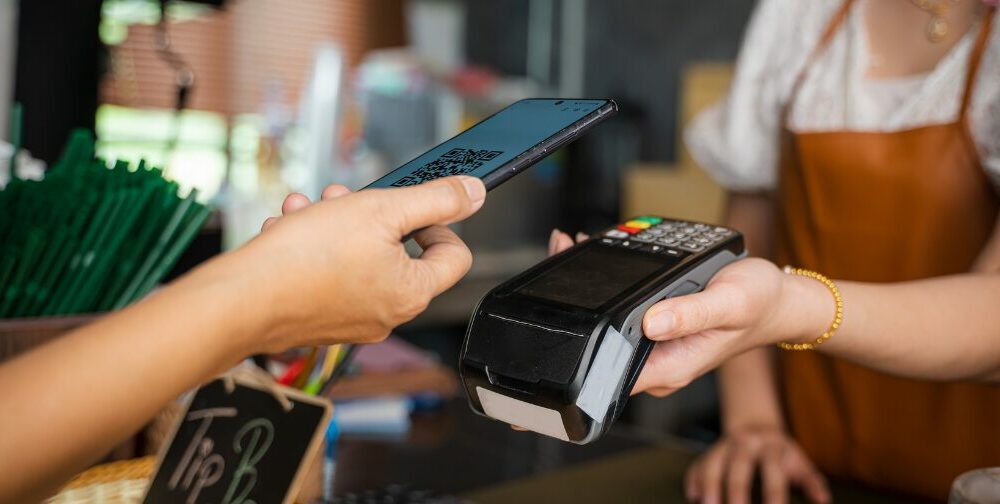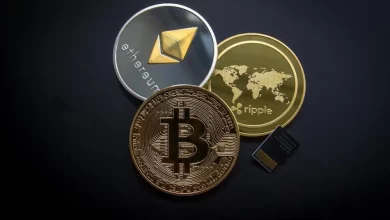Mobile Payment Systems: A Comprehensive Guide to Their Role in the Global Economy and Future Trends

In the past decade, mobile payment systems have emerged as a transformative force in the global economy, fundamentally changing how consumers and businesses engage in financial transactions. The proliferation of smartphones, coupled with advancements in mobile technology, has enabled the rapid adoption of mobile payment solutions across various sectors. As we move further into the digital age, the role of mobile payment systems is becoming increasingly significant, not only in developed markets but also in emerging economies where traditional banking infrastructure is often limited. This report provides a detailed analysis of the current state of mobile payment systems, their impact on the global economy, and the future trends that are set to shape this dynamic industry.
The origins of mobile payment systems can be traced back to the early 2000s, but it wasn’t until the widespread adoption of smartphones and mobile internet that these systems began to gain significant traction. According to a report by Juniper Research, the global mobile payment market was valued at approximately $1.48 trillion in 2019 and is expected to reach $12.06 trillion by 2027, growing at a compound annual growth rate (CAGR) of 29.0% during the forecast period.
Several factors have contributed to the rapid growth of mobile payment systems. First and foremost is the increasing penetration of smartphones, which has provided consumers with a convenient and accessible means to conduct transactions. As of 2023, there were over 6.8 billion smartphone users worldwide, representing 86% of the global population. This widespread access to mobile devices has created a fertile ground for the expansion of mobile payment services.
Another key driver is the growing demand for contactless payment solutions, especially in the wake of the COVID-19 pandemic. The need for social distancing and hygiene measures has accelerated the adoption of contactless payment methods, with mobile payments emerging as a preferred alternative to cash and card transactions. In the United States alone, contactless payments are projected to account for 53% of all in-person transactions by 2026.
The Global Impact of Mobile Payment Systems
Mobile payment systems have had a profound impact on the global economy, influencing various aspects of commerce, finance, and consumer behavior. One of the most significant effects has been the reduction in the reliance on cash transactions, particularly in developing countries where access to banking services is limited. In regions such as Sub-Saharan Africa and Southeast Asia, mobile payment platforms like M-Pesa and GCash have become essential tools for financial inclusion, enabling millions of unbanked individuals to participate in the formal economy.
In China, the adoption of mobile payments has been nothing short of revolutionary. The country is home to two of the world’s largest mobile payment platforms, Alipay and WeChat Pay, which together processed more than $17 trillion in transactions in 2022. The ubiquity of these platforms has transformed China into a nearly cashless society, with mobile payments being used for everything from small retail purchases to large-scale investments.
Mobile payment systems have also played a crucial role in the growth of e-commerce. The integration of mobile payment options on online shopping platforms has streamlined the checkout process, reducing cart abandonment rates and boosting sales. According to eMarketer, global e-commerce sales are expected to reach $6.5 trillion by 2023, with mobile commerce (m-commerce) accounting for more than 72% of this total.
Moreover, the adoption of mobile payments has had a significant impact on small and medium-sized enterprises (SMEs). Mobile payment solutions have enabled these businesses to expand their customer base by offering more flexible and convenient payment options. This is particularly evident in developing economies, where SMEs often face challenges in accessing traditional banking services. Mobile payments have provided these businesses with a lifeline, enabling them to accept digital payments and grow their operations.
Key Players and Technologies in Mobile Payments
The mobile payment landscape is dominated by a few key players, each offering unique solutions that cater to different market needs. Among the most prominent are:
Apple Pay: Launched in 2014, Apple Pay is a mobile payment and digital wallet service that allows users to make payments in person, within apps, and on the web. As of 2023, Apple Pay was accepted in more than 70 countries and supported by over 5,000 banks and financial institutions worldwide.
Google Pay: Google Pay is a digital wallet platform and online payment system developed by Google. It allows users to make payments using their Android devices, wearables, or on the web. The platform has gained significant traction in both developed and emerging markets, with over 150 million active users globally.
PayPal: A pioneer in digital payments, PayPal has been at the forefront of the mobile payment revolution. With its mobile app, PayPal enables users to send and receive money, pay for goods and services, and manage their finances. As of 2023, PayPal had over 435 million active accounts, making it one of the most widely used mobile payment platforms in the world.
Alipay and WeChat Pay: In China, Alipay and WeChat Pay are the dominant mobile payment platforms, with a combined market share of over 90%. These platforms offer a wide range of services, including peer-to-peer payments, bill payments, and in-store purchases. Their success has been driven by the seamless integration of mobile payments into everyday life, from shopping to transportation and beyond.
M-Pesa: M-Pesa, a mobile money service launched in Kenya in 2007, has revolutionized financial services in Africa. The platform allows users to deposit, withdraw, transfer money, pay for goods and services, and access credit and savings options. With over 51 million active users across Africa, M-Pesa has become a cornerstone of the continent’s financial infrastructure.
The Role of Regulation and Security
As mobile payment systems become more integral to the global economy, regulatory frameworks are evolving to ensure their safety, security, and reliability. Governments and financial regulators worldwide are working to establish guidelines that protect consumers and prevent fraud while fostering innovation in the mobile payment space.
One of the primary concerns surrounding mobile payments is security. With the increasing frequency of cyberattacks and data breaches, ensuring the security of mobile transactions has become a top priority for both providers and regulators. Advanced technologies such as tokenization, encryption, and biometric authentication are being employed to safeguard users’ financial information and prevent unauthorized access.
In addition to security measures, regulatory bodies are also focusing on promoting competition and innovation in the mobile payment industry. For example, the European Union’s Payment Services Directive 2 (PSD2) aims to create a more level playing field by allowing third-party providers to access consumers’ bank accounts with their consent. This has led to the rise of open banking, where consumers can use third-party apps to manage their finances and make payments, further driving innovation in the sector.
Future Trends in Mobile Payments
As we look to the future, several key trends are expected to shape the evolution of mobile payment systems:
The Rise of Central Bank Digital Currencies (CBDCs): Central banks around the world are exploring the development of digital currencies that would function alongside traditional fiat currencies. CBDCs could offer a secure, government-backed alternative to existing mobile payment solutions, with the potential to enhance financial inclusion and streamline cross-border transactions.
Increased Adoption of Cryptocurrencies: While still in the early stages of mainstream adoption, cryptocurrencies are gaining traction as a viable payment method. Platforms like Bitcoin and Ethereum offer decentralized payment solutions that can be used for peer-to-peer transactions, online purchases, and even cross-border payments. As regulatory frameworks become more defined, the use of cryptocurrencies in mobile payments is likely to increase.
Expansion of Mobile Payments in Emerging Markets: Emerging markets, particularly in Africa and Southeast Asia, are expected to continue driving the growth of mobile payments. The combination of limited access to traditional banking services and high smartphone penetration rates makes these regions ripe for mobile payment adoption. As more consumers and businesses in these markets embrace mobile payments, the global footprint of these systems will expand further.
Integration with IoT and Wearable Devices: The Internet of Things (IoT) and wearable devices are poised to play a significant role in the future of mobile payments. Smartwatches, fitness trackers, and even connected cars are being equipped with payment capabilities, allowing users to make transactions without the need for a smartphone. This trend is expected to drive the next wave of innovation in the mobile payment space.
Enhanced Personalization and AI-Driven Services: Artificial intelligence and machine learning are being increasingly used to deliver personalized payment experiences. From targeted offers and promotions to AI-driven financial management tools, these technologies are helping mobile payment providers differentiate their services and enhance customer engagement. As AI continues to evolve, its role in mobile payments is expected to grow, offering more tailored and intuitive financial solutions.
Conclusion
Mobile payment systems have become a vital component of the global economy, offering a convenient, secure, and accessible means of conducting financial transactions. Their impact is evident across various sectors, from e-commerce and retail to banking and financial inclusion in developing markets. As technological advancements continue to drive innovation in the mobile payment space, these systems are set to play an even more significant role in shaping the future of finance.
The ongoing evolution of mobile payment systems will be influenced by several key trends, including the rise of CBDCs, the increasing adoption of cryptocurrencies, and the integration of IoT devices. Moreoveras the influence of AI grows, the potential for delivering more personalized and intuitive financial solutions is vast. Mobile payment systems will increasingly become central to everyday financial activities, driven by technological advancements, shifts in consumer behavior, and the continuous push towards a cashless society.
The expansion of mobile payments, especially in emerging markets, will be a significant factor in global economic development. As more individuals gain access to financial services through mobile platforms, economic participation will increase, particularly in regions where traditional banking infrastructure is lacking. Furthermore, the integration of mobile payments with IoT and wearable devices will open new avenues for seamless and efficient transactions, further embedding mobile payment systems into the fabric of daily life.
In conclusion, mobile payment systems are at the forefront of the digital transformation in finance. Their role in the global economy is poised to grow even more significant as they evolve to meet the changing needs of consumers and businesses. The trends highlighted in this report suggest that the future of mobile payments is not just about facilitating transactions but about creating a more integrated, secure, and personalized financial ecosystem. As we move towards this future, the impact of mobile payment systems will be felt across all levels of society, shaping the way we manage and interact with money in the digital age.





